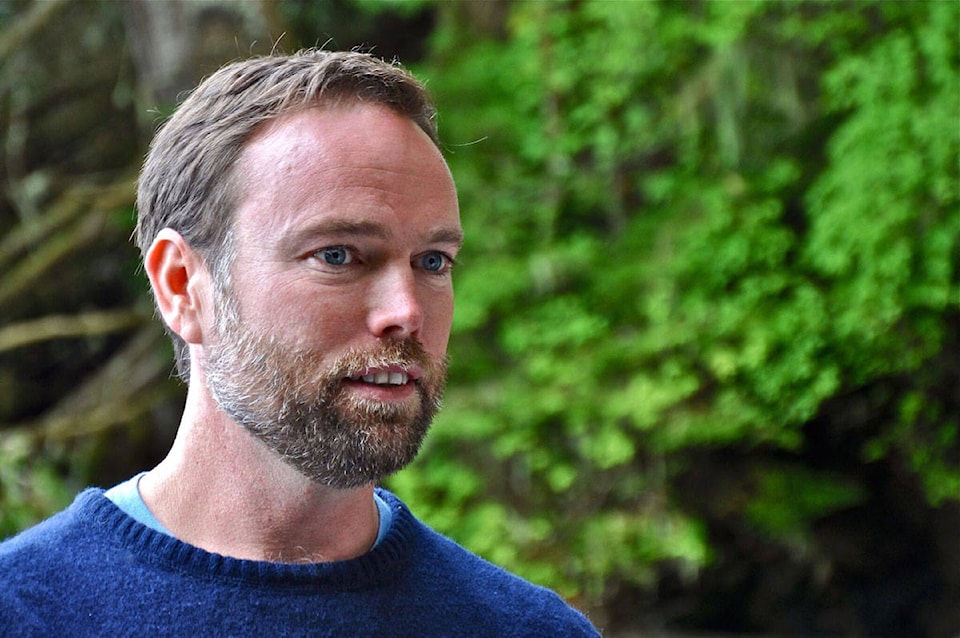For a chinook salmon born in the Kalum River, life has always been difficult. These giants grow over a hundred pounds making them the largest salmon in the world. Life for them is complex. Hatching from the gravel in early spring, they spend a year living in turbulent glacial waters, behind boulders, dashing out for food as it floats by and ducking into a crevice when a bull trout or steelhead wanders past.
If they survive, the chinook head down to the estuary in late spring and early summer where they transition from fresh to salt water. They search for new food, avoid new predators and learn how to swim against ocean currents and waves. During this time, they are the most vulnerable.
READ MORE: DFO contemplating sweeping North Coast salmon fishery closure
After several weeks of growing in size, chinook leave the estuary, head north along the coast to Southeast Alaska towards the feeding grounds of the Aleutian Islands, about 3000 kilometers away. If they don’t find enough food to grow, this long journey is near impossible. They spend one to six years eating herring, shrimp, and squid. They put on fat, which improves their chances of making it home to spawn.
The North Pacific is not the place it used to be. In 2013 a massive expanse of warm water, known as the “Blob”, changed the food web, currents and predators. Small nutrient-inferior zooplankton replaced the large oil-rich zooplankton that thrived in a cool North Pacific. Both salmon, and the fish they prey on, eat Zooplankton - the foundation of the food web in the ocean. The “Blob” lasted three long years then subsided in the water. For more than three years, our salmon had little to eat.
The North Pacific has been warming and cooling for thousands of years. This natural cycle is well linked to both the number, and the health, of returning salmon. When water is cooler, our salmon do well. In years when water is warmer, our salmon do poorly. Over the last decade, this natural warming and cooling cycle has broken down, with more rapid fluctuations between warm and cool years, bringing greater uncertainty and poorer salmon returns across British Columbia.
The story isn’t much better closer to home. The same warm water that affects the feeding grounds of the North Pacific is warming our estuaries. Many salmon leave their rivers to find little food when they reach the ocean. Many are starving to death before they are able to head North to the open Pacific.
Food is not the only issue. In many places, there are new predators. Fish normally found off California, such as mackerel, are showing up in larger numbers on the coast of British Columbia. They feed voraciously on young salmon.
Upriver, both juvenile and adult salmon face new challenges. Hot, record-breaking summers can push temperatures to dangerous levels. Warm water depletes oxygen, weakens salmon immune systems and slows salmon down. These stresses can kill them before they have a chance to lay their eggs. Low water cuts access to creeks, reduces habitat and makes it easier for us to catch them.
Even if they manage to spawn, huge storms cause historic floods and landslides, as we recently saw in the Copper and Bulkley rivers. These storms arrive in the fall and flush eggs out of the gravel, change river courses and choke eggs with silt. The nutrients of their dead parents are flushed out of the system, and Juveniles born the spring prior try to find refuge if they can.
This is on top of habitat destruction, harvesting and everything else we throw at them.
READ MORE: Sweeping salmon closures for recreational fishing
Fortunately, the news is not all bad. Salmon are resilient and highly adaptable. We just need to imagine them colonizing our rivers after the last Ice Age to understand of what they are capable. This isn’t simply an abstract exercise. Salmon are still pioneering new habitats. An example is Strohn creek in the Nass watershed. Here, thousands of sockeye spawn where a glacier stood only a few decades ago.
It isn’t a question of whether or not salmon have the ability to adapt to our new climate reality; it is a question of whether or not we give them a chance. Our management systems are out-dated, built when environmental conditions were relatively stable and predictable. Sadly, those responsible for managing salmon seem reluctant to admit this and don’t seem open to developing something better.
As people and communities who depend on salmon, we need to face this new reality. There simply aren’t as many fish as before, and it is unlikely to get much better soon. It also seems unlikely governments will take the lead to solve the situation, and there are no magic bullets.
As I see it we have two choices – entrench ourselves in our own self-interest and fight amongst ourselves until we fight over the last fish. Or, sit down, with an open mind, and have difficult conversations with our neighbours in an effort to preserve access to these fish.
We need to figure this out together. We need to respect that we are all salmon people.
Greg Knox
Executive Director
SkeenaWild
READ MORE: Should we trust polluters to protect our health and environment?
newsroom@thenorthernview.com
Like us on Facebook and follow us on Twitter
